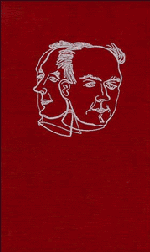Book contents
- Frontmatter
- Contents
- NEW MUSICAL RESOURCES
- PART I TONE COMBINATIONS
- PART II RHYTHM
- 1 Time
- 2 Metre
- 3 Dynamics
- 4 Form
- 5 Metre and Time Combinations
- 6 Tempo
- 7 Scales of Rhythm
- PART III CHORD-FORMATION
- DEFINITIONS OF TERMS
- A NOTE ON THE TYPE IN WHICH THIS BOOK IS SET
- Notes on the text
- Henry Cowell's “New Musical Resources”
- Index
3 - Dynamics
from PART II - RHYTHM
Published online by Cambridge University Press: 05 June 2015
- Frontmatter
- Contents
- NEW MUSICAL RESOURCES
- PART I TONE COMBINATIONS
- PART II RHYTHM
- 1 Time
- 2 Metre
- 3 Dynamics
- 4 Form
- 5 Metre and Time Combinations
- 6 Tempo
- 7 Scales of Rhythm
- PART III CHORD-FORMATION
- DEFINITIONS OF TERMS
- A NOTE ON THE TYPE IN WHICH THIS BOOK IS SET
- Notes on the text
- Henry Cowell's “New Musical Resources”
- Index
Summary
Musical metre is usually considered to pertain to regularly recurring accent, and it has been so treated here. Since, however, the term “metre” covers all exigencies of accent in music, the subject of dynamics, or degrees of stress (or shading, as it is sometimes termed), will be seen to be related to metre. In the subject of recurrent metres, it is assumed that there will be theoretical accents of heavy stress on the first beat of any measure, light beats in unaccented portions of the measure, and perhaps medium stress applied to secondary accents within the measure. This gives only three different shades of dynamics, while in actual use there are many subtle differences; performers who have the ability to control delicate dynamic shades gain instant appreciation, and probably no other one element in performance produces such sure emotional reactions from the auditor; control of dynamics may often mark the difference between a masterly and a mediocre performer. In spite of its importance, there is no adequate notation for dynamics, and the fine distinctions are left to the performer, although such distinctions might well be considered an essential part of composition. When a performer produces fine dynamics, he is really supplying an element of composition and is creating a rhythmic form into which to pour the tonal mass. Often the performer has wider knowledge of dynamics, or feeling for them, than the composer, since dynamics has been far too little considered by composers as an essential element of composition, perhaps owing to the inadequacy of the notation. We are able to notate only a few shades: ppp, pp, p, mp, mf, f, ff, fff; and these are only relative; who can say exactly how soft p is, or exactly the loudness of a ff?
Science can measure the loudness of sound by a number of well-known means.
- Type
- Chapter
- Information
- New Musical Resources , pp. 81 - 83Publisher: Cambridge University PressPrint publication year: 1996



